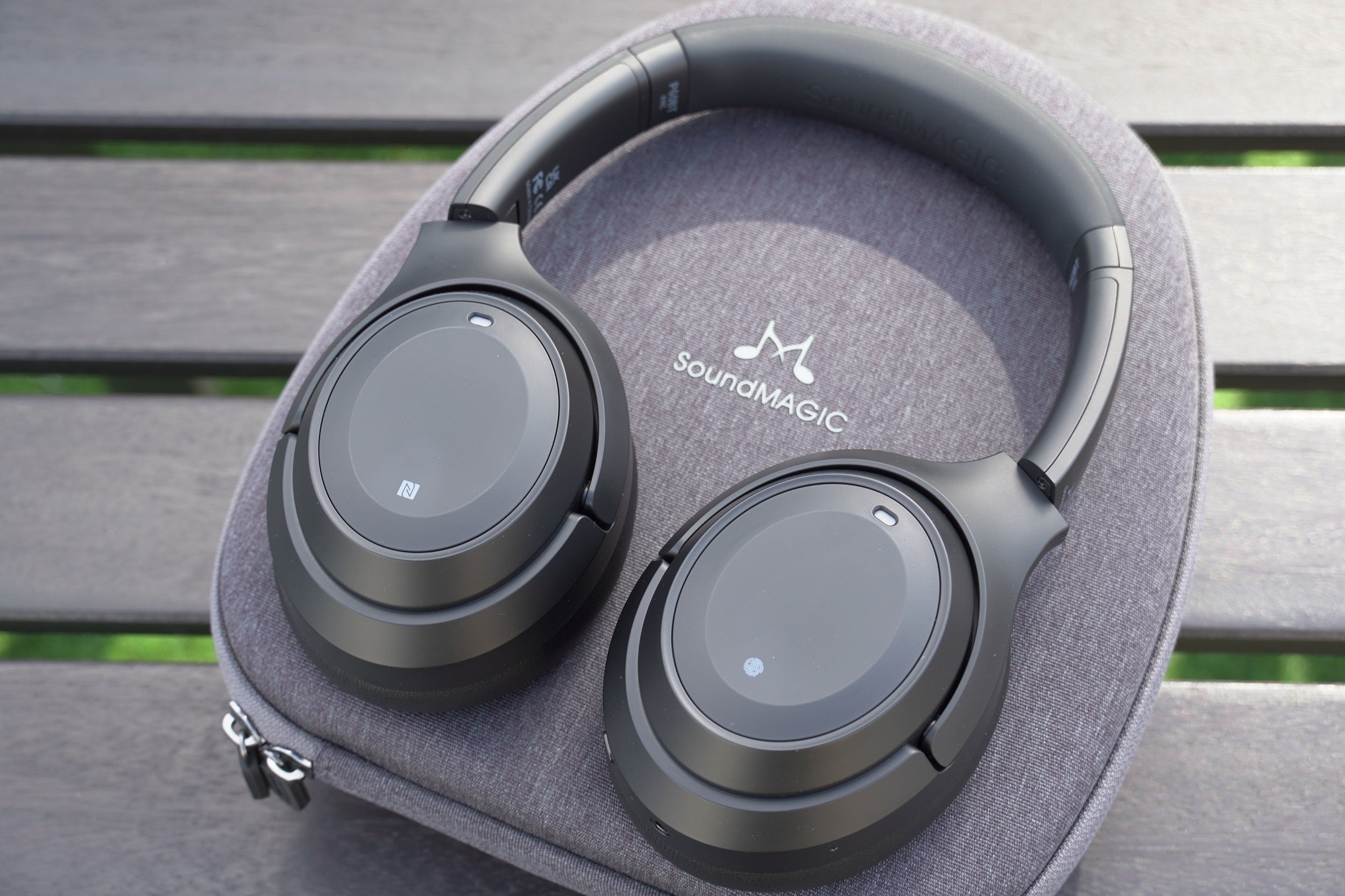Sony WH-1000XM5 Review
The next stage in evolution for Sony's WH-1000X series
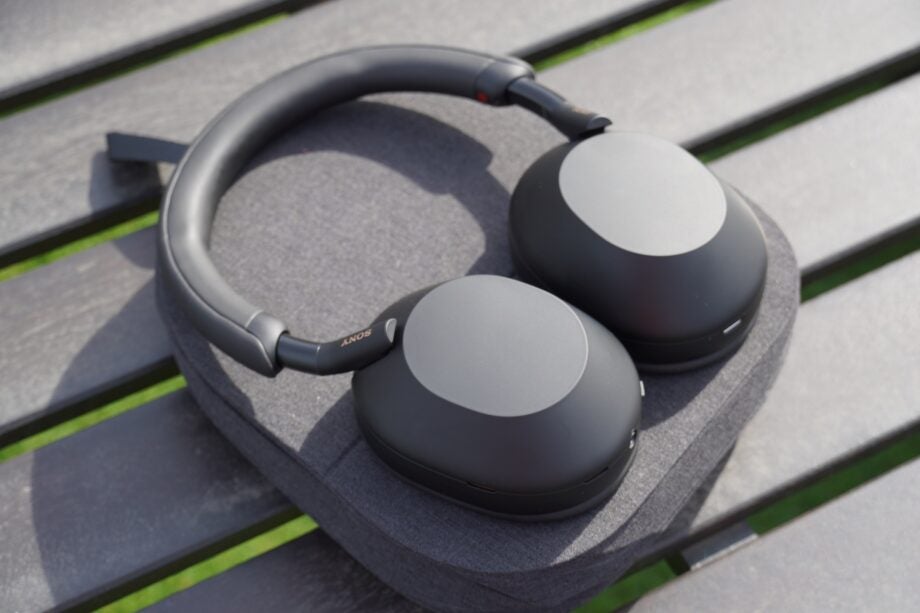

Verdict
Sony’s WH-1000XM5 improve over their predecessors in small ways that add up. The new design assists noise-cancelling performance, but it also means the headphones are no longer foldable; the ANC makes all types of environments spookily quiet, while the audio has received incremental gains for a better sound. Overall, the 1000XM5 are another superb all-round set of wireless headphones from Sony.
Pros
- Excellent comfort
- Musical, rich audio performance
- Impressively clean and natural noise cancellation
- Superb Ambient Mode
- Great call quality
Cons
- Non-foldable design
- Connection gets choppy in busy areas
Availability
- UKRRP: £379.99
- USARRP: $399.99
- EuropeRRP: €420
- CanadaRRP: CA$499.99
- AustraliaRRP: AU$549.00
Key Features
- V1 integrated processorBrings improvements to noise cancelling performance
- DSEE ExtremeRestores frequency response of tracks using AI
- 360 Reality AudioSupports immersive 3D audio
Introduction
Perhaps it’s how time has felt these past few years, but it didn’t feel that long ago that Sony’s WH-1000XM4 launched. Now we have their successor in the WH-1000XM5.
Their arrival feels similar to when a sports team wins a trophy. Once the summit has been reached, how high can you go next time? What can you change to be better? We anointed the WH-1000XM4 the kings of noise-cancelling headphones on their release – and the direction is usually down if you don’t get things right or improve.
But this is Sony we’re talking about. The company couldn’t mess up the golden goose that is the company’s Wireless Headphones series. Could it?
No, we didn’t believe it either.
Design
- No longer foldable
- Super-comfortable to wear
- Prone to attracting greasy marks
The most controversial aspect of the WH-1000XM5’s design is that they can no longer collapse and fold inwards. I’ll get to the reason for this further down; but first, the aesthetics.
The 1000XM5 are a good-looking pair of headphones. The carry a similar design language to the older models, but the series has made the jump to a more modern, more svelte and urbane look.
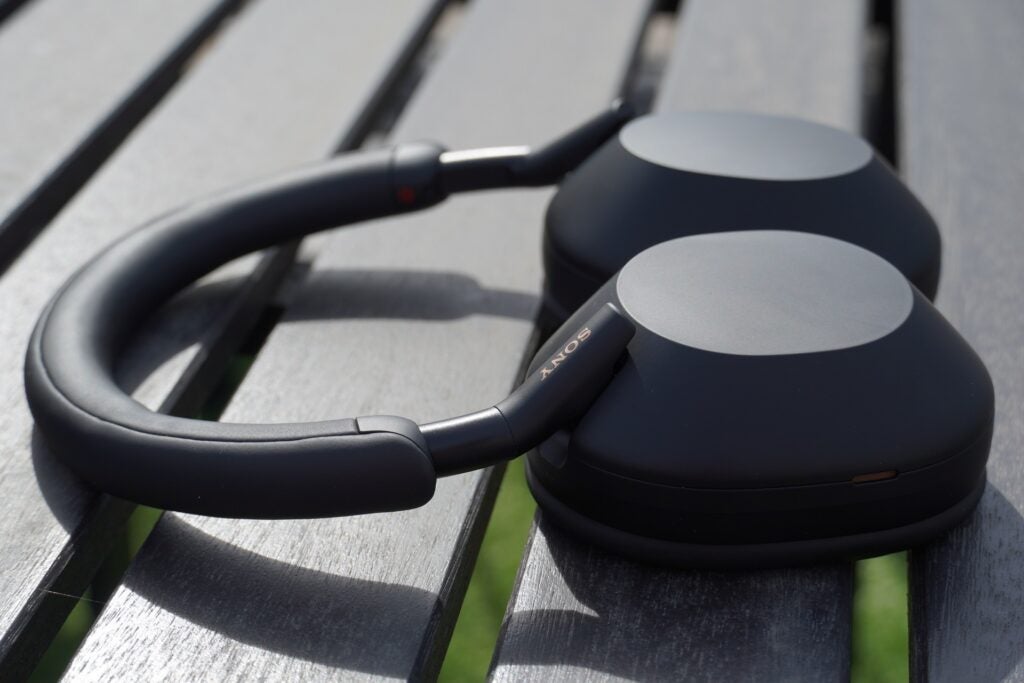
They’re available in Sony’s usual black and silver options, and are made from the same recycled newspapers the LinkBuds used, as well making use of bumpers from cars left on the scrap-heap. It’s all part of Sony’s attempt to make good on hitting zero emissions by 2040.
Like the 1000XM4, they’re prone to attracting marks and smudges (it appears I have very greasy hands). These can be wiped off but, well, look less than attractive close-up. It’s noticeable on the black model, and I imagine the silver one might obscure things better.
At 250g, they weigh the same as the previous model, and while it looks as if there’s less cushioning, the earpads feel tremendously soft, press lightly on the ears and don’t become too warm. You could wear these headphones for hours – as I have done – and only need to make a few adjustments to relieve any pressure.
The space for your ears has taken on a different shape, more rounded and less of a pointed oval. Sony says the change is based on its research of ears going back goodness knows when; however, it means my ears don’t quite slot in. This led me to think that my ears weren’t big enough, but now I wonder if that’s just how they function.
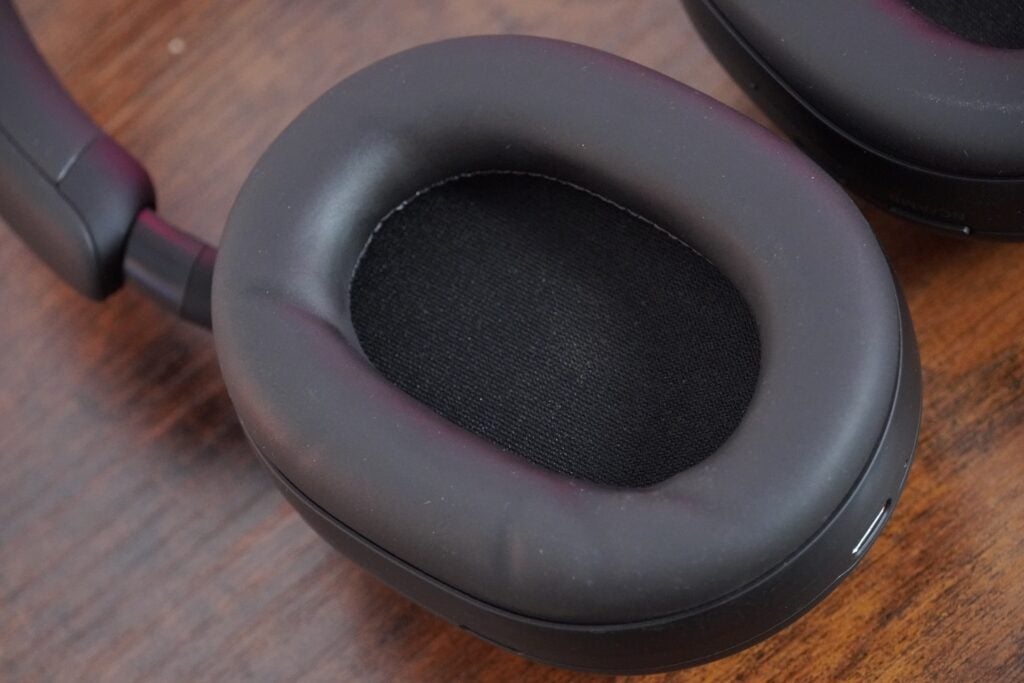
The wear detection is “invisible”, as Sony puts it, the sensor hidden in the earcups, and its implementation is hit and miss. It can restart tracks but not always pause them, so there are times when music just keeps on playing once I’ve taken the headphones off. Touch and swipe controls work fine on the right earcup, though tapping to play a track for the first time doesn’t always register (but the second attempt does).
Now to the semi-controversial aspect. The WH-1000XM5 can’t fold, and the reason for this is to boost their noise-cancelling performance. With fewer parts that stick out – hinges, for example – and gaps for a blustery wind to seek out, the amount of noise the design creates is reduced, ensuring the noise cancellation has less to deal with. Bose took the approach with the Noise Cancelling Headphones 700, as did Apple with the AirPods Max.
So, it isn’t a new idea, nor is it really controversial. Taking both the WH-1000XM5 and WH-1000XM4 out on a windy day, I could hear less turbulent air with 1000XM5 than I did with the XM4. It isn’t a drastic change, but the sensation of calm does help on the noise cancelling side.
The issue, really, is what to do with the headphones when you’re not wearing them. I hang them around my neck, but if that becomes bothersome then I’d normally put them in the (large) pocket of my combat trousers. That’s slightly trickier with this model as they don’t fold. This proved an issue when I attended the Women’s FA Cup Final and it started to rain on the way to Wembley (once again, the headphones don’t have an IP rating).
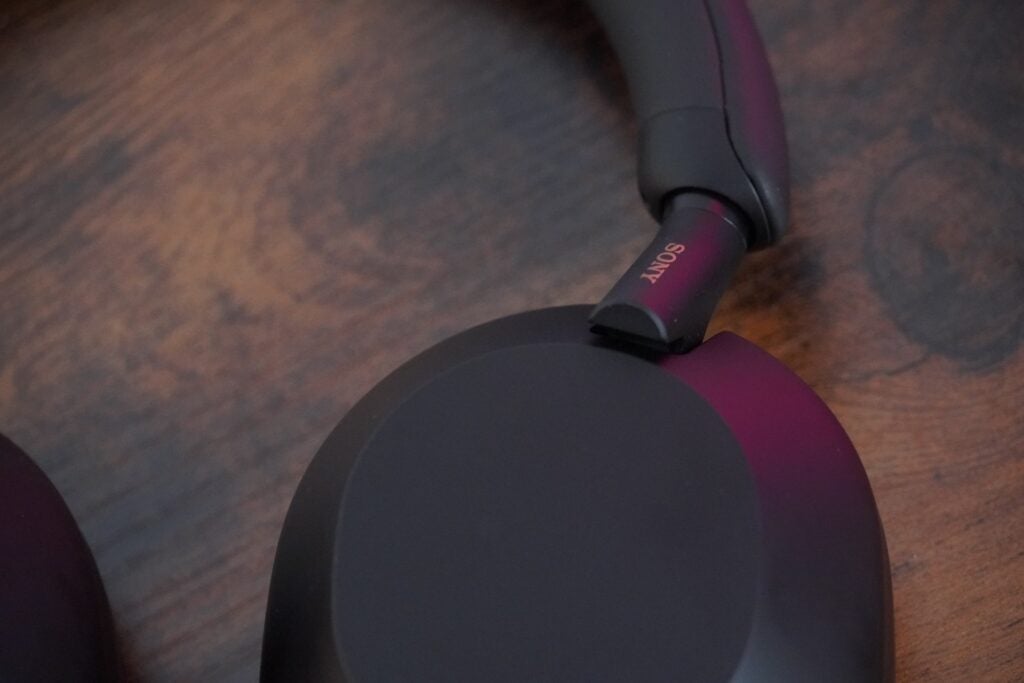
The new look means that the fit is adjusted through a stepless slider, which is slicker than the “clack-clack” sounding slider of the old model. The headband is thinner and, again, more comfortable with its synthetic soft leather underside covering the majority of the headband for a plush feel.
The “Custom” button has been renamed to “NC/AMB” to manage noise cancelling modes, but other functions can be designated to it in the app. The new storage case is bigger and collapsible, so it can be flattened to take up less space if it’s been taken on a journey. It’s neat and I like it.
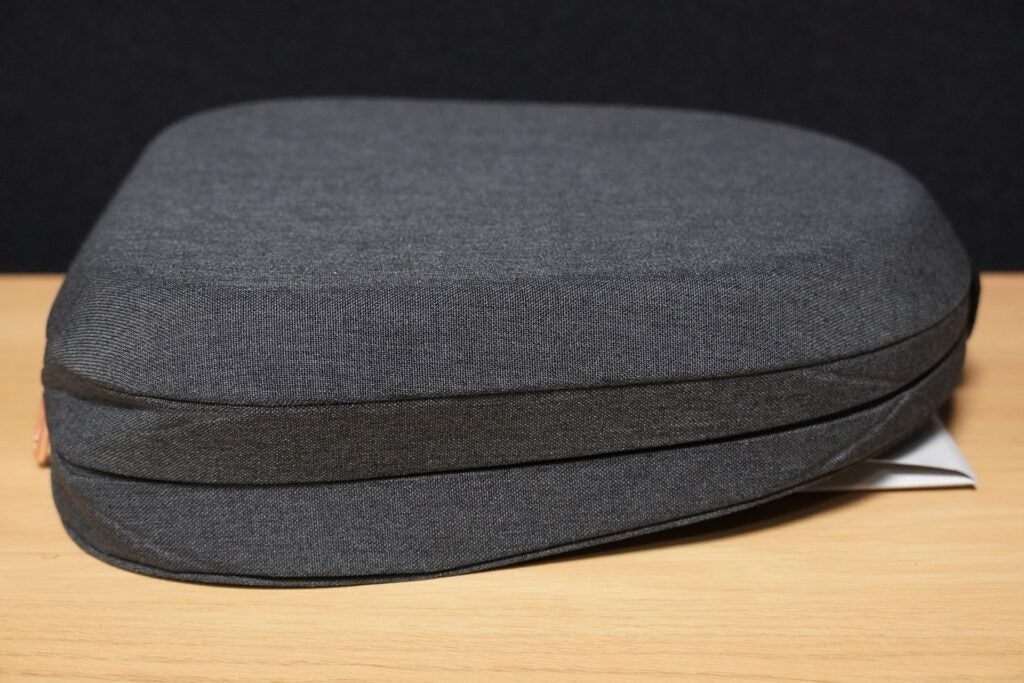
Features
- Excellent noise cancelling and transparency mode
- Terrific call quality
- Battery life remains the same
- Connection can fall over in busy signal areas
All the features the 1000XM4 boasted are carried over, with a sprinkle of new additions and tweaks you’ll notice in the layout of the easily navigable Headphones app.
Speak-to-Chat returns, intelligently pausing music when you speak and restarting when it senses you’ve stopped (if you don’t like periods of silence you can change how fast it resumes). Built-in voice assistance is a choice of Google and Alexa, and both can be activated via their Hey Google and Alexa wake words.
The Quick Attention mode where you put your hand over the right earcup to let sound in is back, and Adaptive Sound Control detects places you frequent often, log them as places of interests, and in the app, you can build custom sound profiles that activate when you visit that area, such as turning on the ambient sound mode at a train station, or changing the equaliser automatically at the gym.
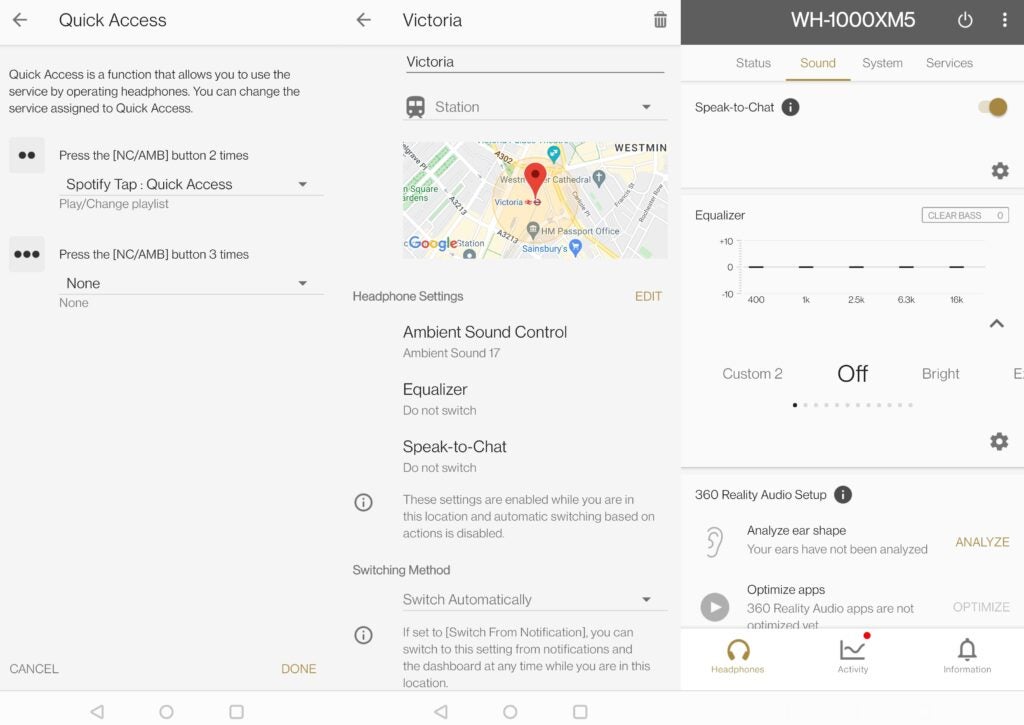
Location permission needs to be set for “all the time” on your mobile device for it to automatically switch. I could get the headphones to switch noise cancelling modes, but not EQ or Speak-to-Chat. Perhaps it’s something to do with the dev version of the Headphones app used for review.
The headphones support Apple’s MFi (Made For iPhone) program for improved compatibility with iOS devices, there’s Google Fast Pair for speedy first-time connection to Android devices and new is Spotify Tap, where you can customise the NC/Ambient button to resume playback in the music service by assigning functions to double or triple taps (Spotify has to be open otherwise nothing seems to happen).
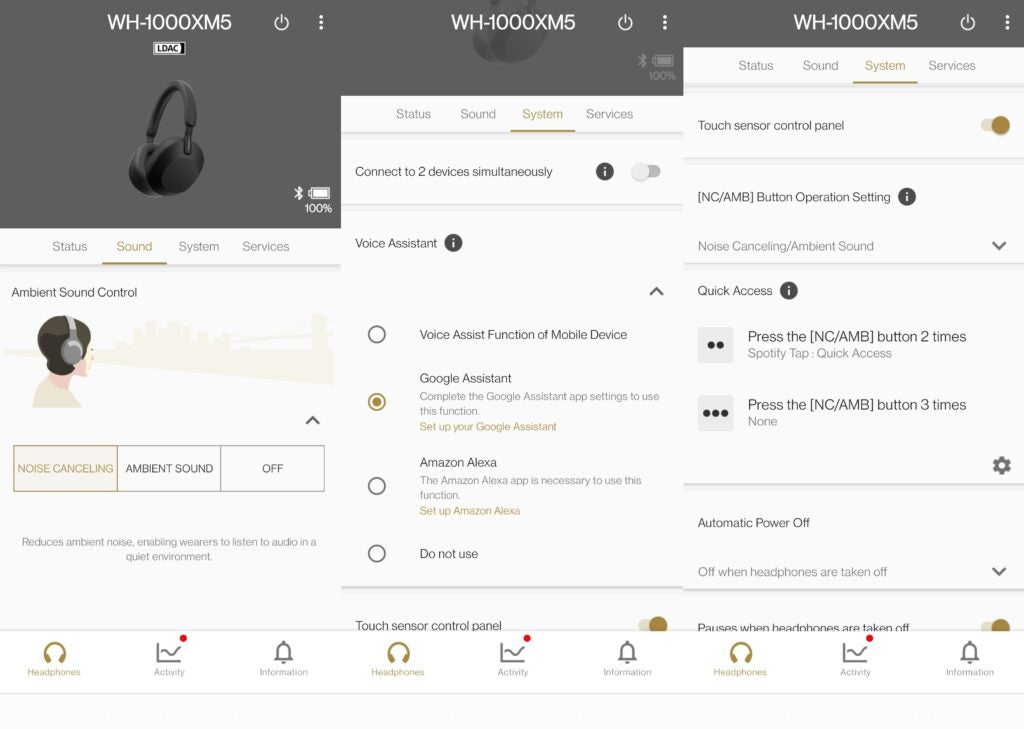
There’s an equaliser for tuning the sound, as well as certification for Sony’s 360 Reality Audio that supports music in immersive 3D sound (available on Tidal and Deezer).
Battery life is the same with 30 hours of noise cancellation, and I managed to get over a week’s use of listening a few hours a day before they hit 10% battery. The surprise is that the battery life isn’t more, as the introduction of the V1 integrated processor brought efficiencies to the battery on the WF-1000XM4. But sticking with the HD Noise Cancelling Processor QN1 has reduced the scope for improvement in this area.
On the true wireless model one chip covered everything. On the 1000XM5 there are two, so there isn’t the same level of integration and efficiency possible you’d get from a system-on-chip design. Turn noise cancelling off and you do get a boost to battery, from 38 to 40 hours over the previous model.
The ANC is supported by eight microphones (matching the Technics EAH-A800), and they are positioned in north, south, west and east positions on the earcup. Sony says there have been improvements in how the headphones cope with high frequency sounds, and that seems fair. When faced with sharp, screeching sounds the 1000XM5 dull the edges to make them less noticeable.
They don’t seem to suffer from the issue whereby focusing on the mid- and low frequencies can exacerbate higher ones. Sounds of babies crying or young children being stroppy on the train were calmed down sufficiently so as to not impact the music I was listening to.
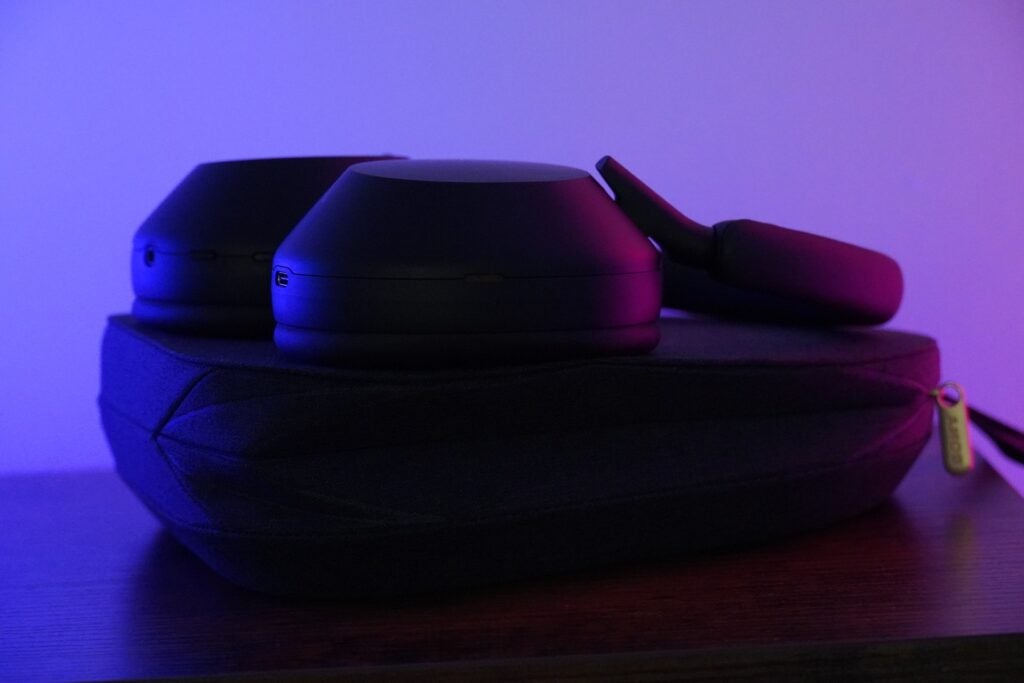
It’s how it deals with voices that I have a slight reservation about. Some note the XM5s are better at suppressing people talking, but to my ears the XM4 conceals voices better. I think the Bose QuietComfort 45 are better in this regard too, but in the favour of the 1000XM5 is that its tone is cleaner and natural, with none of that processing you get on other headphones. Put music on, and not even at a particularly loud volume, and the word transforms into a very quiet one.
In any case, the Sony WH-1000XM5 are an excellent pair of noise cancellers, and it’s always impressive just how much noise they stop. Voices are hushed, noises from big crowds are expertly stripped away and vehicles big and small are reduced in clinical fashion. Transport is quieter, the wind rushing past on the tube subdued, though there are parts of the Jubilee line that no headphone seems capable of taming. If Sony’s engineers want a challenge, they should take a trip on Jubilee line to hear how loud that can get.
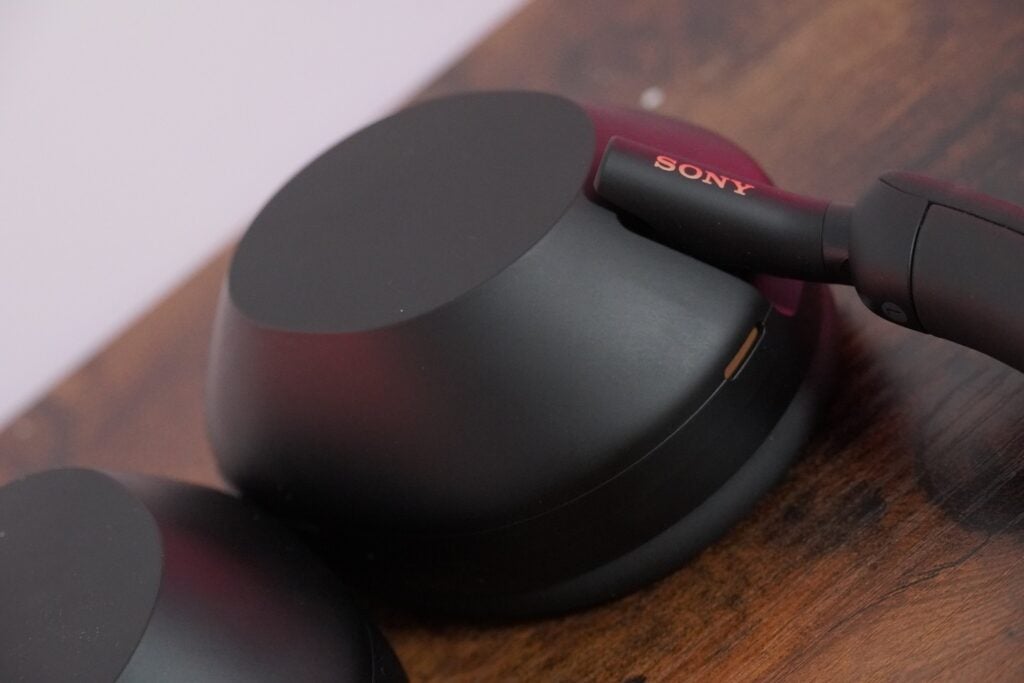
While the Bose have the edge with voices, once you add in the protection Sony’s design gives when faced with wind noise and I’d rate the 1000XM5 as the better overall choice – as long as you can live with not being able to fold them.
The app offers 20-steps of noise cancellation in the Ambient Sound section, and the Ambient Mode is even better than it was on the 1000XM4. There’s less noise from the microphones, the sound piped in is clear and natural, as well as big and spacious – at times it feels you’re not wearing the headphones at all.
Not quite as consistent is the headphone’s connection to mobile devices. Tethered to an Android smartphone and the 1000XM5 becomes disappointingly choppy in the concourse of busy train stations like Victoria and Waterloo. Prioritising for connection reliability reduced the number of stutters, but not completely, and for Android users Bluetooth sound quality dip to AAC when the connection is prioritised.
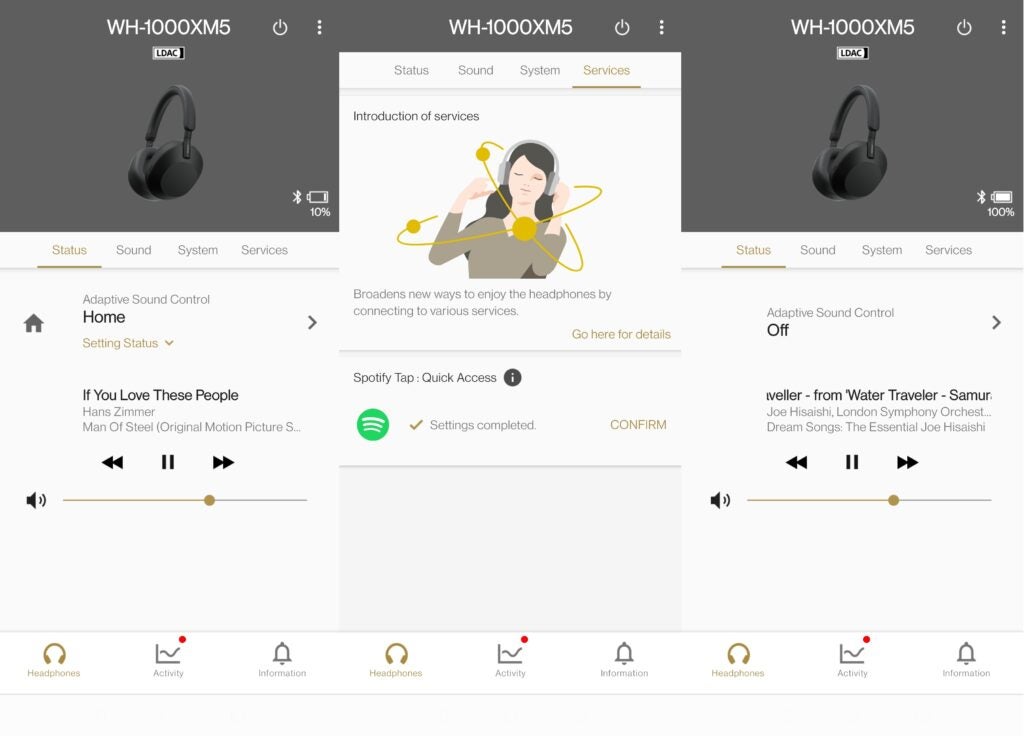
The headphones feature the latest Bluetooth 5.2 standard, and as well as AAC there’s SBC (boo) and LDAC (yay), the latter widens the Bluetooth bandwidth to play higher quality tracks (like Qobuz or Tidal Masters). Multipoint support means the headphones can switch between two devices, but you can’t have multipoint and LDAC on simultaneously. The headphones simply can’t support the amount of bandwidth required.
A final note on call quality, which is superb. The person on the other end of the line could hear me loud and clear, describing my voice as coming through flawlessly. The headphones did not pick up the noises of buses, bikes, cars or even the high pitch tones from a zebra crossing when walking in the Southwark area. Only isolated pockets of people’s voices were notable and there was no pickup of wind noise either. In that content, they are easily the best headphones I’ve used for calling.
Sound quality
- Boost to low and high frequencies
- Rich, detailed midrange
- Versatile in the range of music genres it can handle
The changes to the WH-1000XM5’s audio performance are incremental. This isn’t the same big leap the 1000XM4 made from the 1000XM3. In a broad sense both the new and older model have similar characteristics, but the tweaks make the 1000XM5 a more refined performer.
The low end of the frequency range is where the difference is most laid bare between the XM5 and the XM4. I’d always been of the opinion that the XM4 offered the best bass of its peers, but the new model goes a step further. It sounds much more accurate and brings a texture to low frequencies the XM4 can’t match.
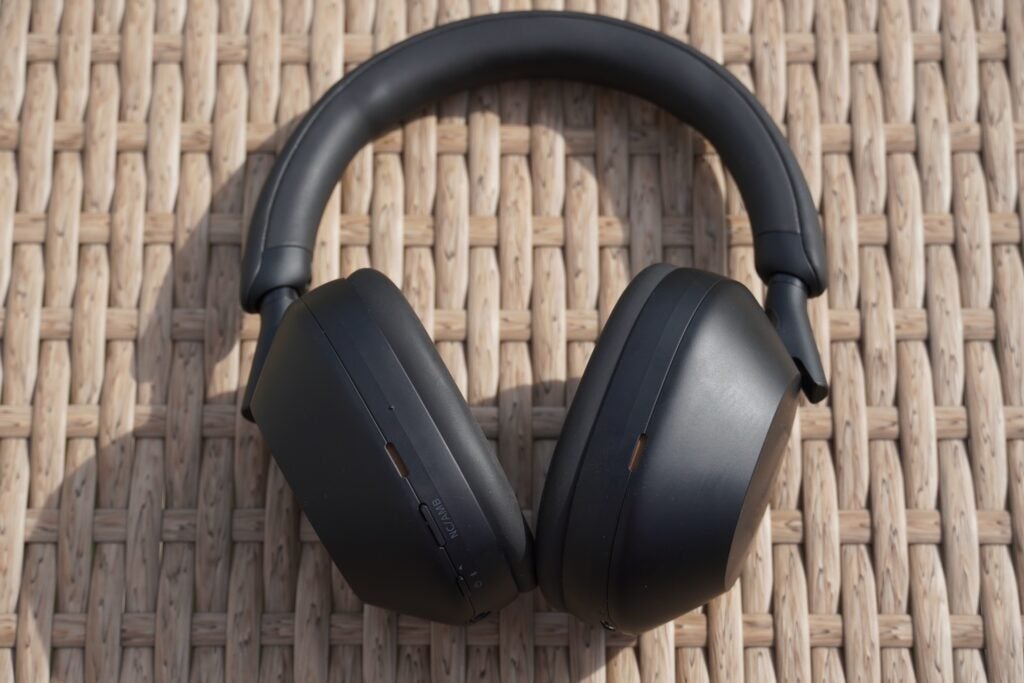
The bass in Hot Sugar’s Sinkies has slightly more depth, the bass reverb articulated with more pronounced weight and detail, while when Beyonce calls in the 808s during Déjà vu, the bass is delivered like no other wireless headphone I’ve heard do. Eminem’s Say What You Say is another good example of the improvements, with more force that helps extend the headphones’ dynamic range.
In terms of flow and rhythm, Chic’s Everybody Dance is tied together with an excellent sense timing and precision, the constant beat effortlessly maintained as well as weaving in all the instruments and voices in the track – Sony’s wireless headphones have always been the most musical and that’s no less evident with the WH-1000XM5.
The soundstage is also described in slightly different terms, likely due to the use of a new 30mm driver. Instruments on the 1000XM4 sound bigger while on the 1000XM5 they sound tighter and more focused, but the soundstage still has the same level of width. The level of precision is more finely tuned this time around.
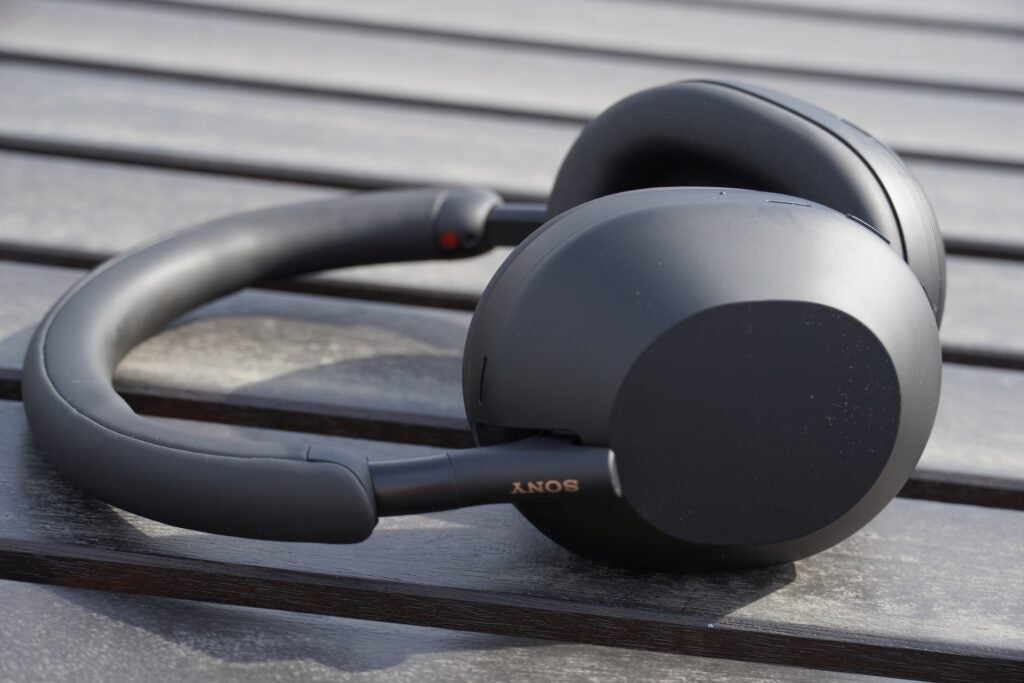
The midrange is richer in tone and extracts more detail too. I’ve noticed that instruments out towards the edge of the soundstage have more definition, detail and clarity. The guitars in Derek and the Dominoes’ Layla sounds richer, with more twang and fidelity applied to the strums of the guitar.
Vocals mirror what I heard on the WF-1000XM4, slightly richer and warmer in tone compared to crispness of the WH-1000XM4, with a fraction more focus over the older model that results in a bit more clarity and definition.
And Sony also says the new driver set-up offers improved high frequency sensitivity, though it’s more noticeable with higher quality tracks like CD quality streams or Tidal Masters. The tambourine on Jon Batiste and Stay Human’s Naima’s Love Song springs to life with more detail than there was on the 1000XM4, while trumpets and horns in the New Masters cover of Childish Gambino’s This Is America have more expression and warmth.
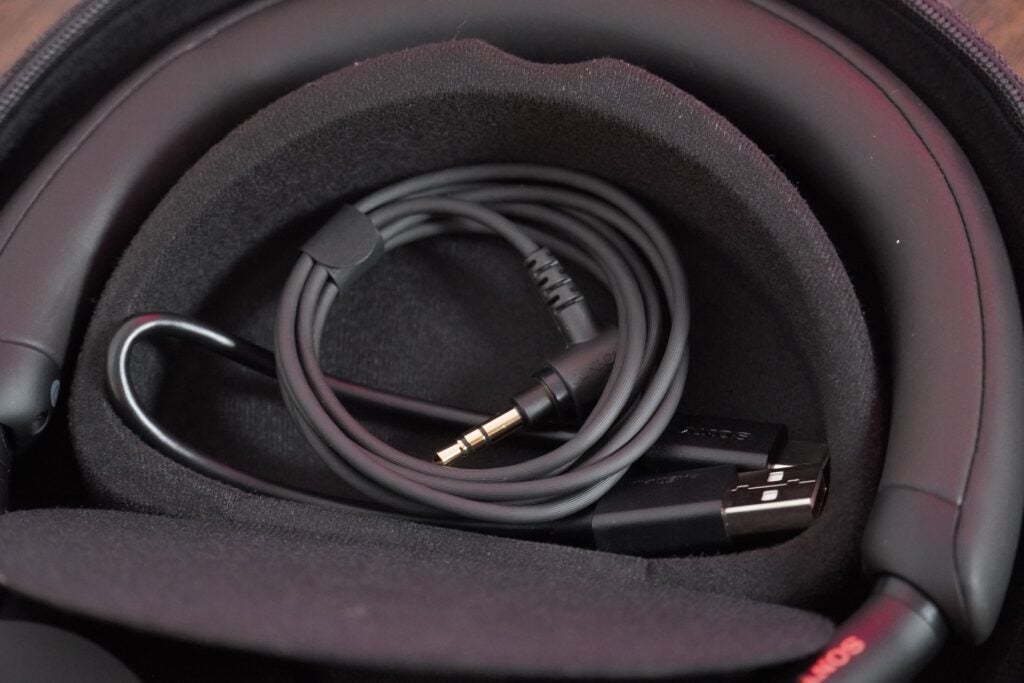
There is at times a richness at the top end of the frequency range that make the WH-1000XM5 a very relaxing, non-fatiguing listen. The Technics give them good competition, and I think they edge the Sony with their crispness that extracts more detail and clarity from high frequency instruments.
But where no headphone seems able to match Sony’s is the reduction of noise. There’s less noise with the XM5, which becomes useful streaming older tracks on lower quality streams from Spotify.
This is probably where the DSEE Extreme upscaling kicks into action, and a track like The Sonics’ Have Love Will Travel has always sounded rough most wireless headphones, but the WH-1000XM5 reduces the noise floor, smooths voices out and brings some organisation and definition to instruments. It fashions what can often be a crude sounding track into a much more palatable listen.
The Sony remain the best sounding headphones at their price, their balanced sound is adaptable to any genre, and in some ways they extend their lead a little further with their relentless consistency of how music is delivered. The improved upscaling of lower quality tracks brings all types of music, new and old, onto a more even footing. So while the changes are incremental, I don’t think any other headphone can currently match Sony’s achievements in the sound department.
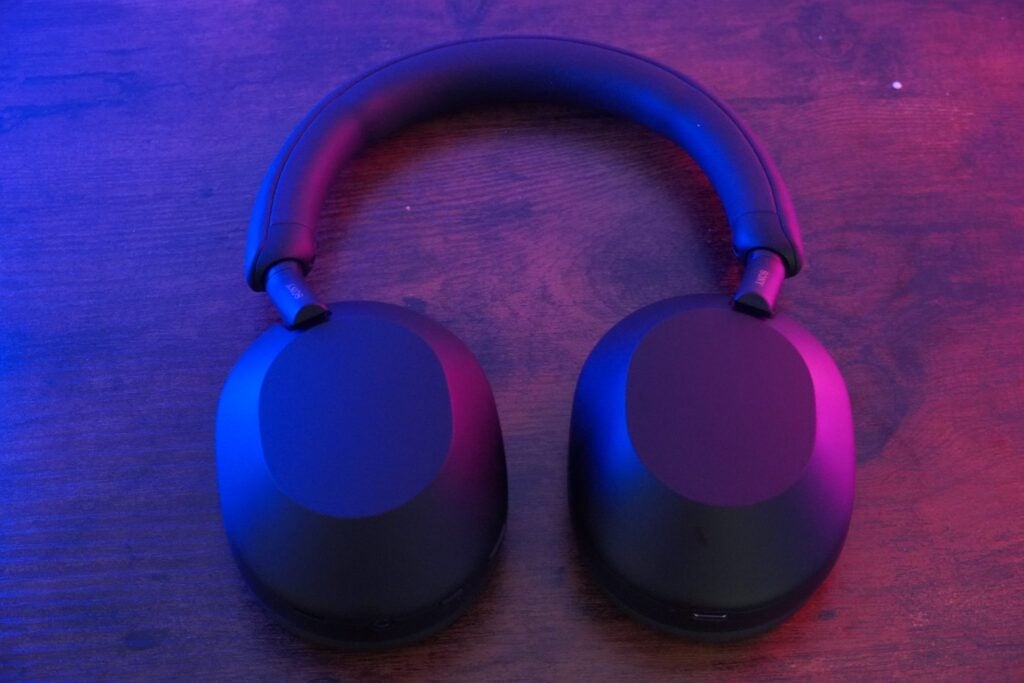
Latest deals
Should you buy it?
If you haven’t upgraded your ANC headphones in years The noise cancellation excels, call quality is great, the fit is incredibly comfortable, and they sound better. There are some areas that could be improved but the 1000XM5 reassert their position as the best noise cancelling headphones
If they’re out of your budget The jump in price to £379.99 seems respectable in view of the gains the headphones offer, but the 1000XM4 model will still be available for a while yet and at a more affordable price
Final Thoughts
Sony giveth and taketh away with the new design but ultimately, the benefits outweigh the drawbacks. The latest iteration of the 1000X Series maintain Sony’s position as the best noise cancelling headphones on the market. They sound better, are well stocked for smarts and features, the noise cancellation and ambient modes remain impressive, and they are very comfortable to wear over long periods.
As an all-rounder there aren’t another wireless pair of noise cancelling headphones that reach the same peaks. There’s still some room for improvement, though, which should give Sony’s rivals some food for thought.
How we test
We test every headphones we review thoroughly over an extended period of time. We use industry standard tests to compare features properly. We’ll always tell you what we find. We never, ever, accept money to review a product.
Find out more about how we test in our ethics policy.
Tested for two weeks
Tested with real world use
Tested with a range of music genres
FAQs
The 1000XM5 are currently available for pre-order now, with availability set to begin on May 20th, 2022.
No, these headphones don’t support wireless charging (it’s too slow apparently), but fast-charging provides three hours of playback in three minutes.

